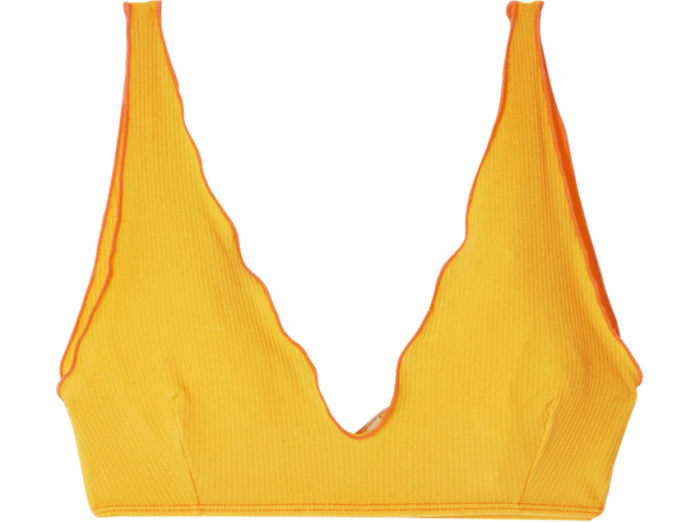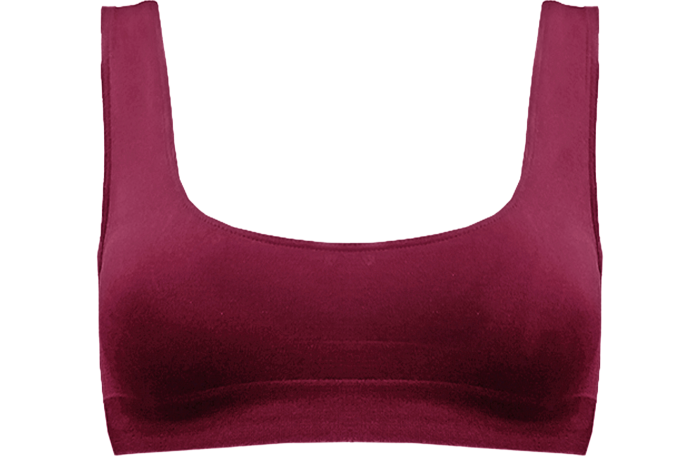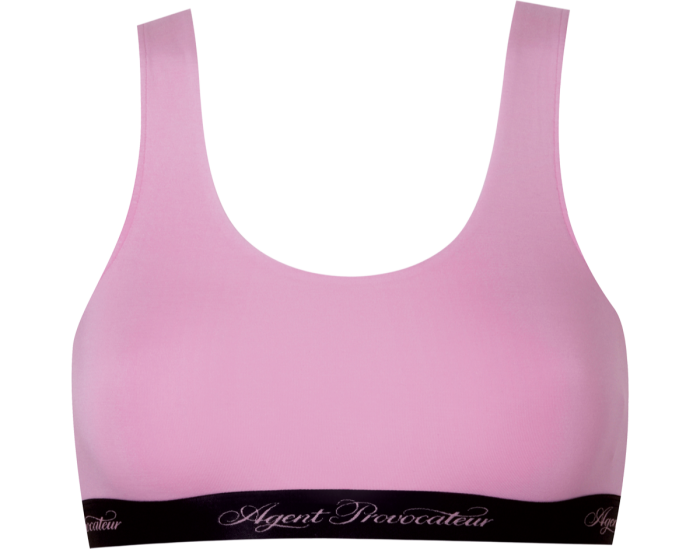
Even before Daisy Edgar-Jones was pictured in an unadorned, unpadded bralette in the BBC’s Normal People, soft bras were on the rise. It’s well noted that underwear of every kind has been one of the retail successes of the lockdown era, but her character Marianne’s choices felt entirely in tune with a shift towards comfort and simplicity – and a rejection of the underwire.

It’s an ideal that is less concerned about the pushing-up and projecting mechanics of the bras that were popular in the ’90s – when British lingerie label Agent Provocateur was born and Wonderbra launched its infamous “Hello, boys!” advertising campaign; a time when the male gaze dominated the media via lad mags and television programmes such as Girls Gone Wild. That bustier ideal lasted until millennials decided they didn’t like it – in the same way that many of that generation are rejecting high heels (sales of which are on the decline). The soft bra is the underwear equivalent of the natural make-up look touted by the likes of Glossier: youthful and pretty. In the past few years, brands such as Baserange, ARQ, Love Stories, Heist and Prism2 have appeared, as well as the self-described “bed-to-street” label Les Girls, Les Boys, from Agent Provocateur founder Serena Rees.

Nearly all the bras in Gucci’s current lingerie collection are made from tiny tulle triangles in sheer black or pink. Even Dolce & Gabbana, once synonymous with sultry black balconettes and corsets, has a mix of soft bras, wireless styles and bralettes in stretch cotton-jersey.


The comfort of the soft bra has been evermore alluring while confined to the home. At MatchesFashion this spring, it accounted for 60 per cent of bra sales – an 89 per cent increase from last year. In the six weeks up to June, the style became even more popular, accounting for 70 per cent of sales. At Selfridges, soft-cup bra sales have increased 40 per cent in the past year. Calvin Klein is its most popular soft-bra label, then Love Stories, Chantelle and S by Sloggi.

“Consumers are more focused and aware of comfort dressing,” says Poppy Lomax, womenswear buying manager for Selfridges’ Body Studio. “It’s also about the rise of the athleisure trend and sportswear bras, which women wear as a fashion statement now.”


Of course many women, freed from the conventions of office dressing, have been ditching the bra altogether. As good as that may feel, Nudea CEO Priya Downes says some support is always advisable. “The breast is mostly supported by the so-called Cooper’s ligaments, a connective tissue that does not stretch as elastic would,” she says. “Every time they’re pulled – for example, when jumping without proper support – they stretch a little bit more. They do not recover, and in time this causes drooping of the breast. Most of us women wouldn’t dream of exercising without a sports bra, and walking around the house or sitting hunched over a desk shouldn’t be any different.”

In recent weeks, Nudea’s Easy Does It bralette, made with a sheer microfibre, has become its bestseller. Nudea offers customers a bra-fitting service over Zoom – I received the brand’s bespoke measuring tape in the post and had an appointment via my phone with the head fitter, Carlotta.

One of the off-putting things about soft bras previously was that they offered little support for those of a larger size. Jo Rossell, a former ready-to-wear designer for Margaret Howell, founded her brand Rossell England in 2016 “out of pure frustration” that she couldn’t find a non-underwired bra that would give her support. “If you were anything over a B-cup, none of the soft bras at that time worked,” she says. The key element in her design is the angled “boning” – a soft strip of silicone at the side of the breast – which gives the same support as a half-underwired bra. “The most popular sizes that sold in May are D and DD, which I’m really pleased about because that’s what I set out to do.”


Perhaps nothing underlines the change in bra tastes so much as Agent Provocateur’s own shift to embrace the new aesthetic. Creative director Sarah Shotton says the definition of female empowerment has changed in recent years. “Now it’s about the athletic body, health and wellbeing, whereas perhaps at the beginning it was more about the male gaze,” she says. “Five years ago, I think the brand got a little lost – navigating our way through the #MeToo movement was difficult. But we’ve had a really good reception to recent campaigns featuring female athletes.” At the end of the year, the brand is launching a collection featuring many more soft bras. “It’s a move that’s been informed by our customers,” says Shotton. “They want bras that they can wear all day.” And in this fiercely competitive industry, what women want matters.
"soft" - Google News
July 08, 2020 at 09:00PM
https://ift.tt/2Cdw6oX
Soft focus: the new lingerie evolution - Financial Times
"soft" - Google News
https://ift.tt/2QZtiPM
https://ift.tt/2KTtFc8
Bagikan Berita Ini














0 Response to "Soft focus: the new lingerie evolution - Financial Times"
Post a Comment